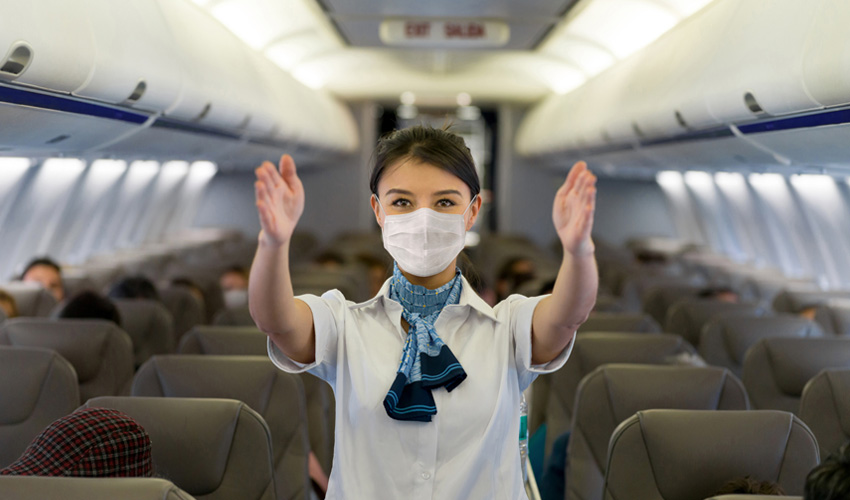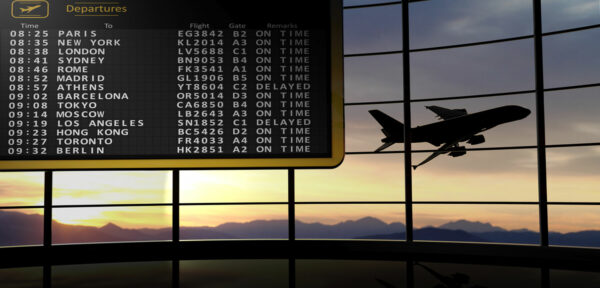The pandemic has affected every facet of our lives in ways we never imagined. As governments had to develop measures to contain the virus spread, businesses have been struggling to remain in the market. But of all, the air travel sector has been one of the hardest impacted. It is estimated that before the Coronavirus, around 58% of tourists arrived at their destination by air. This declined dramatically as nations had to shut down borders and limit domestic flights. As a result, global passenger traffic in 2020 declined by 65.9% compared to 2019. The industry has certainly faced other challenging events in the past. Today, airlines recognize how important is to prepare for demand changing rapidly.
To get travelers flying again, carriers have gone through an exhaustive process of rethinking their business. Efforts to provide a cleaner passenger experience, combined with a steady stream of vaccinations, raise hopes for a summer resurgence. However, something that we have learned about this pandemic is that the situation can change in just a few weeks. Mutated strains of Coronavirus are still giving governments a headache. In the coming months, we will likely see travel restrictions on and off. Airlines will have to find ways to optimally work around these conditions and be ready to adapt their schedules. This is crucial to regain and keep customer confidence in air travel growing.
What strategies can help airlines prepare for demand to rebound this summer?
1. Bringing travel back with a focus on passenger wellbeing
Recent surveys show that passengers are eager to get back out into the world. In the United States, after President Biden announced that all adult Americans will be eligible to get a vaccine by the beginning of May, travel booking app Hopper registered a 63% increase in flight searches. But as bookings in the country seem to be heating up, expectations are increasing as to how the travel experience will look.
Sanitation is at the top of the list for airlines that prepare for a demand rebound. The public wants to feel secure and safe. To ensure this, airlines like United are already applying advanced air filtration systems in the passenger cabins. Moreover, some have enhanced their cleaning protocols by deploying UV light to disinfect sensitive components in the flight deck in combination with antimicrobial coatings. Experts estimate that UVC systems could help to disinfect an aircraft cabin in a matter of minutes.
Likely important for passengers is the promise of a streamlined journey. With entry regulations varying from region to region, it is understandable that visitors might get confused about what is required, making the flight stressful. Initiatives like digital health passports can help to automate Coronavirus documentation at border control and other touchpoints. Projects currently underway include the International Air Transport Association (IATA) Travel Pass. With the app, users get informed on what tests, vaccines, and other measures they require before travel. Direct on their phone, tourists can share their tests and vaccination results in a privacy-protecting manner. So far, at least 20 airlines have announced trials of this tool in key routes.
2. Paving the way towards a more sustainable summer travel
Over 2020, paralyzed revenue streams resulting from the raise of border shutdowns left airlines with severe liquidity strains. To survive, companies had to quickly create strategies to cut their costs, including suspending inflight-food service and improving the allocation of their resources. It is in the race of trying to optimize their processes that sustainability began to gain greater recognition. At a time when aviation stakeholders ask themselves how to make the industry more resilient, adopting “greener” practices is key to attaining increased efficiency.
As airlines prepare for a demand ramp-up, sustainability should be on top of their agendas. There are several areas where this can be promoted. One of them is the adoption of advanced fuel technologies that do not compromise the world´s biodiversity. Sustainable aviation fuels (SAF) produce at least 80% lower emissions than traditional jet fuel. According to IATA, by October 2020 more than 300,000 commercial flights were performed using SAF. The challenges that arise for the coming years will be to scale up their production and make them more affordable.
Another interesting measure relates to airlines’ ground support equipment. The industry is turning to technologies such as machine learning and predictive analysis to better plan and allocate these resources. Airlines and airports benefit from smart algorithms when, for instance, unnecessary use of catering vehicles and loading/unloading equipment can be prevented. That leads to lower fuel consumption, better performance, and a decrease in related operational costs. Advantages are also derived from a health perspective as staff and passengers benefit from improved air quality at airports. Regarding terminal operations, optimized resource management means that the aircraft turnaround becomes more efficient which results in more on-time departures.

3. Training staff and planning the re-enter to job
Last year, we saw how carriers had to send employees on furlough or leave of absence. Passenger traffic was so deeply affected that they could not afford to have them on the payroll. Since then, the landscape looks different. With more people vaccinated, airlines prepare for demand to recover towards summer. Furthermore, some governments are providing additional financial support so that carriers can call pilots and crew back. Early this year, Delta Air Lines announced the plan to bring 400 pilots back to cover the uptick in travel volumes. Businesses following this measure include JetBlue and Spirit Airlines with the latter reporting having already started training new staff.
After some months off work, employees need a well-structured plan to return to the job. Critical knowledge and skills must be refreshed. Specific training requirements will have to be fulfilled before the summer season starts. What is the best way to accomplish this? There is no golden formula, but airliners have to first identify which knowledge gaps exist. Changes in Coronavirus regulations have affected the way aviation stakeholders operate. Learning content must enable participants to develop new required competencies. Since most carriers count with a limited budget, managers could opt for replacing part of the presential training with virtual lessons. This can be beneficial not only from a cost-saving perspective, but also to avoid congestion at training centers.
Summer travel 2021: Defining the path forward
Good news like the increase in vaccinations brings enthusiasm among travelers looking forward to a bright summer season. After a year or more of disruption, airlines prepare for the demand pent-up to be covered by following well-thought-out strategies. In the end, what works for some companies will not necessarily work for others. Therefore, managers need to define their action plans based on their organization’s specific characteristics.
Besides the need for individualized solutions, the pandemic has opened new opportunities for carriers to approach the customer experience. The top priority at the moment is staying safe. So further development of innovations focusing on enhanced sanitation and social distancing will play a crucial role in attracting passengers back. Together with the deployment of advanced disinfection technologies, the trend will be to digitalize the customer journey as much as possible. Apps like the health passport and those that provide boarding passes in digital form aim to limit unnecessary personal interactions and make the embarking process smoother.
Part of offering a pleasant flight is providing outstanding service. After a period away from their regular duties, it is crucial that personnel receive adequate training. Complying with authority mandates has led to significant changes in airline operations. Staff re-entering their jobs must be aware of new protocols, including, for instance, how to respond in cases where social distancing cannot be observed.
The pandemic has hit the world hard, making us remember the importance of ensuring the availability of resources for future generations. In the process of economic and social recovery, safeguarding the environment cannot be excluded. Aviation industry leaders see long-term climate action as a priority. Several carriers are already taking further steps in the direction of making their processes more sustainable. But of utmost importance is stakeholder collaboration to guarantee that environmentally friendly decisions are being taken across the whole logistics chain. Sustainable travel seems to be gaining increasing popularity this summer. Do not be surprised if the environmental factor becomes a future determinant in a passenger´s choice for a flight as well.





0 comments on “Summer Travel 2021: How Can Airlines Prepare for Demand Take-off (vol. II)”